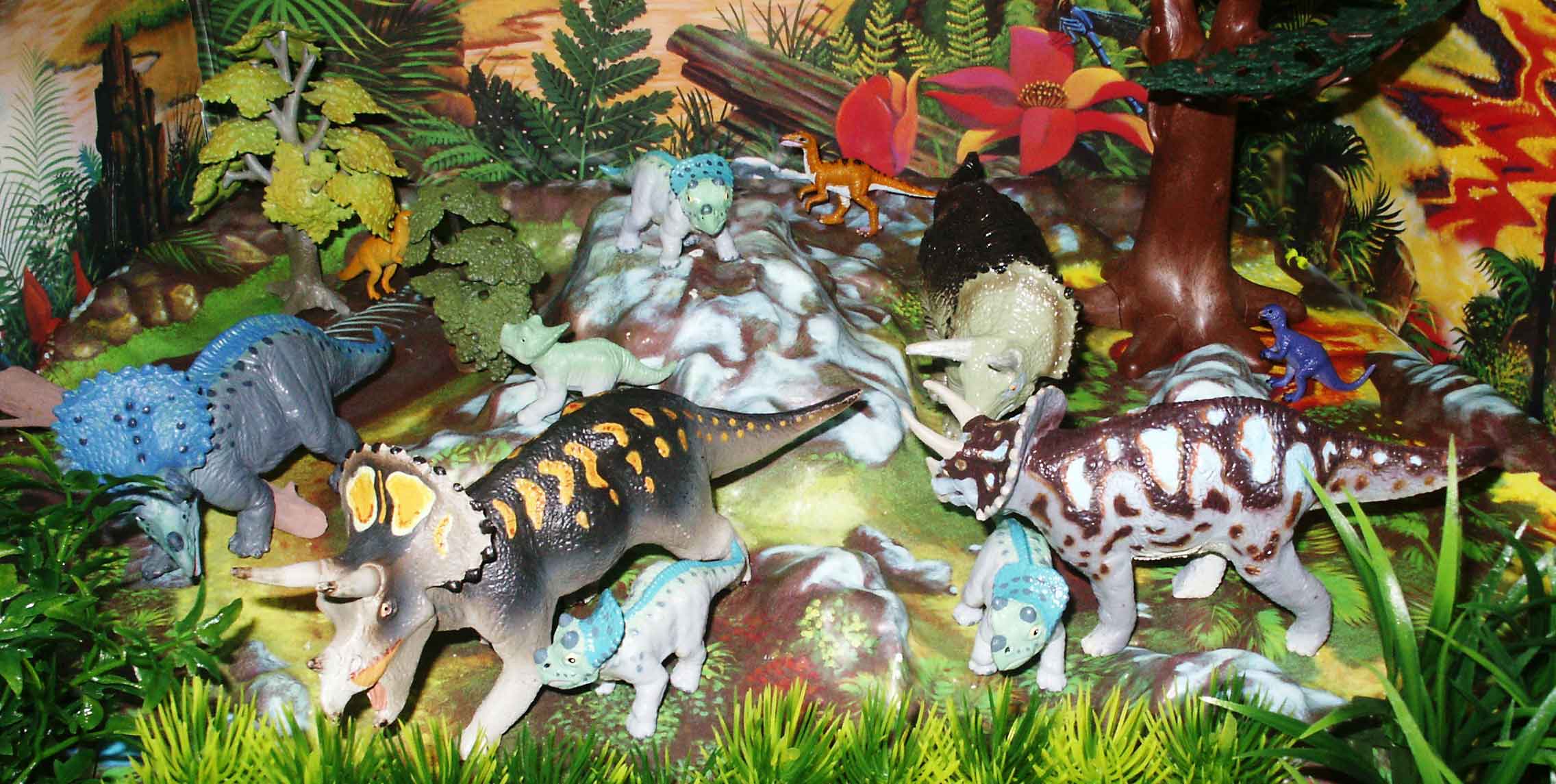
Late Cretaceous
Hell Creek Page 2
From The Dinosaur Collector
The Hell Creek formation of Montana and the Dakotas represents the only well studied terminal Late Cretaceous fauna. ?The Hell Creek Formation is a Late Cretaceous (late Maastrichtian, 67.5 - 65.5 Ma) in eastern Montana, north-eastern Wyoming and both western South and North Dakota, and fossils have been excavated from almost a hundred quarries. It represents a moist, forested landscape, with average temperatures ranging from 10 degrees C at the base of the formation to 23 degrees C at the top, and was deposited by rivers flowing eastwards into a large inland sea. At the end of the period a massive meteor or comet stuck the Yucatan. No dinosaurs have been found after that event. ? It marks the end of the age of the dinosaurs. ???Updated 12/3/06
Master pages Late Cretaceous Diorama pages
Use the links below to see collector pages outside the Hell Creek series. Move your mouse over the picture to find hot spots for more info. Use the arrows at the bottom to cycle through the Hell Creek Diorama.
Triceratops ( Three Horned Face) belongs to long frilled branch of the horned dinosaurs chasmosaurines although it has a short frill and is larger. No bone beds indicating large herds have been found unlike its earlier relatives. In most cerotopsians the distinctive horns and frills develop as the animals mature. Triceratops develops horns early. The frill looks like the primitive Zuniceratops rather than the more recent chasmosaurines. Troodon (stabbing tooth) was a small theropod. It had a sickle claw like the raptors but was only distantly related. The claw was probably used pin prey rather than gut them. Thescelosaurus was a moderate sized plant eater a type common throughout the Mesozoic. A specimen nicknamed “Willo” from South Dakota was in the news when it was reported that it contained a fossilized heart. However, CAT scans have cast considerable doubt over the claim, and it now seems more likely that the“heart” is just an iron nodule.
Safari ltd. has the widest ranges of Triceratops figures. The Carnegie lines has two versions of the original and new release. There is a Wild Safari adult and a Wild Things calf. There is also a baby dinosaur toob Triceratops. The Troodon and Thescelosaurus are bin figures with custom paint.
?The terminal Late Cretaceous fauna?seems to have a lower diversity of dinosaur species than the preceding period. ?The total number of species is lower and the ecosystems seem to be dominated by just one or two of the remaining species. The duckbilled ?Edmontosaurus and horned Triceratops?are the most common dinosaurs; others are uncommon or rare. Lambeosaurines with their distinctive hollow crests have become rare. Parasaurolophus has been identified at Hell Creek from teeth. Lambeosaurines had narrow moths indicating a different feeding strategy so perhaps something about the flora at Hell Creek was unattractive. Leptoceratops at about 6 feet long was one of the last and most primitive of the protoceratopsids. This is a primitive style of dinosaur and probably much like the ancestors of Triceratops.
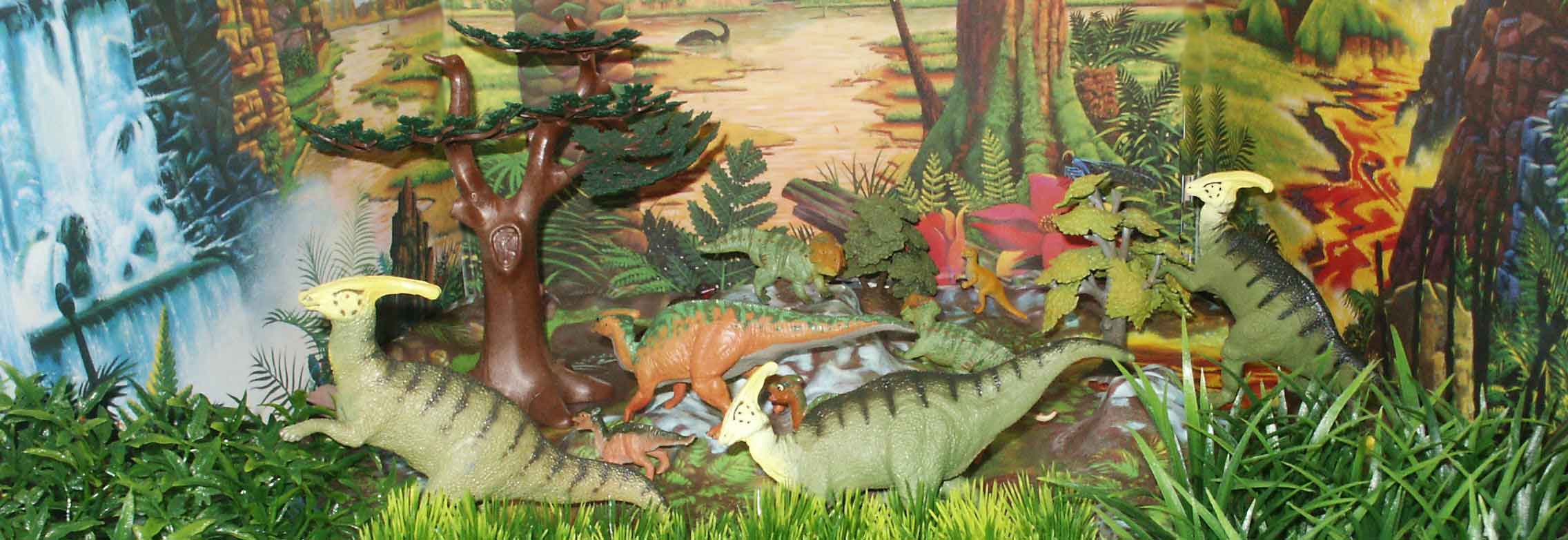
Safari ltd. has the widest ranges of Parasaurolophus figures. The original Carnegie Safari Parasaurolophus had a broader larger head. at some point it was replaced a smaller headed and wattled neck. The Wild Safari figure on all four feet so are the baby Wild Safari and Baby Dino toob figures. The green Wild Safari Leptoceratops is center back,
Tyrannosaurus was one of the largest ever theropods. Its feet had 3 clawed toes pointing forwards with a smaller one at the back. Although the arms may appear tiny and puny, they were in fact quite strong and very well designed for holding struggling prey, and ended in clawed, 2-fingered hands. The jaw was 1.5 meters (4.5 ft) long with 18 cm (0.6 ft), saw-like teeth. It may have lived and hunted in family groups. If we use modern predatory birds as a model they could have had family groups that consisted of a mated pair with several age groups of descendents living together. The more agile teenagers may have acted like female lions in a pride doing most of the real hunting. The small pachycephalosaur Stygimoloch had prominent horns on its head, used mainly for show. It lived in woodlands and was named after the River Styx of Greek mythology, as a play on words from its occurrence in the Hell Creek Formation.
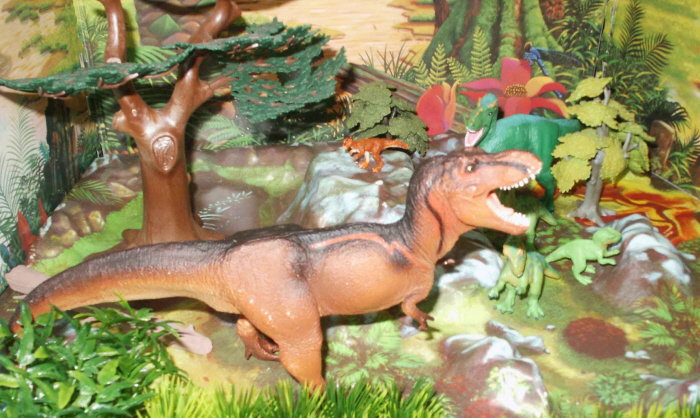
The newest?Tyrannosaurus from Carnegie Safari ?, Wild Safari Tyrannosaurus , Wild Safari chick and Baby Dino toob figures. Custom Wai Fong bin figure based on the Disney Dinosaur Stygimoloch.
Ankylosaur fossils show up in the Hell Creek formation but probably lived in the upland areas that drained into the Hell Creek. Ankylosaurus magniventris (stiffened lizard) the archetypal ankylosaur but was known from pretty scrappy material and the reconstructions were heavily based on an earlier relative Euoplocephalus. Kenneth Carpenter reviewed and reinterpret the finds from the Scollard, Lance and Hell Creek formations. Dromaeosaurus was an agile, man-sized predator, similar to but smaller than Deinonychus. Horner suggests it was the main predator of the environment and T rex was a scavenger. It seems too small even in packs to take on Edmontosaurus or Triceratops.
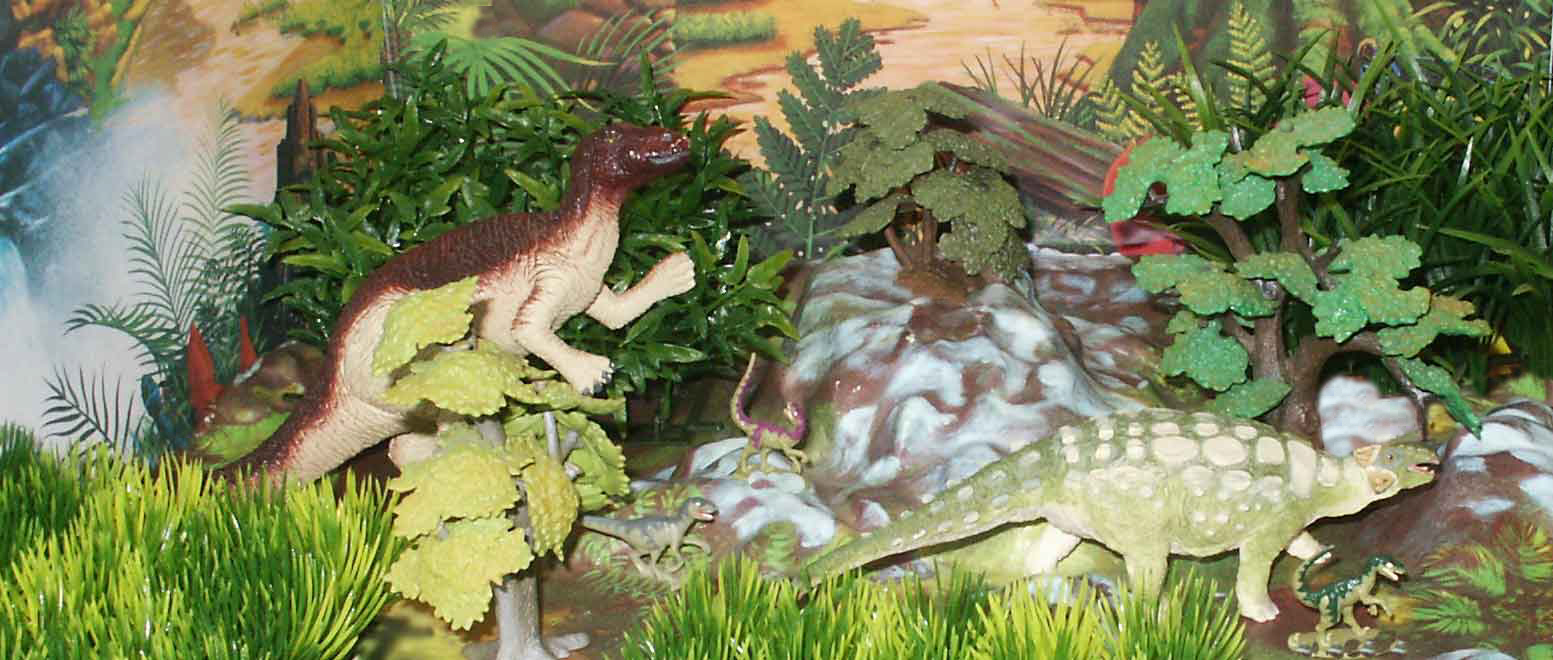
Ankylosaurus from Carnegie Safari , Edmontosaurus from UKRD 1991, raptors from rare Jurassic Park mini playsets. The above pictures used the Ampro Toy Dinosaur Dinorama Museum Edition 41/2 foot mural and 3 D base. There were 3 sets endorsed by the ill fated Dinosaur Society. The Museum and Adventure set used UKRD 1993 figures. The low end version was a card board diorama with Mech figures. All used the same art work.
While earlier pachycephalosaurs were small to medium size animals, Pachycephalosaurus was the giant of the family at 15 feet long. Known mostly from skulls, it has been speculated these washed down from the dry interior of the continent. The head banging behavior is now out of favor. The round and vascular skulls make that seem less plausible.
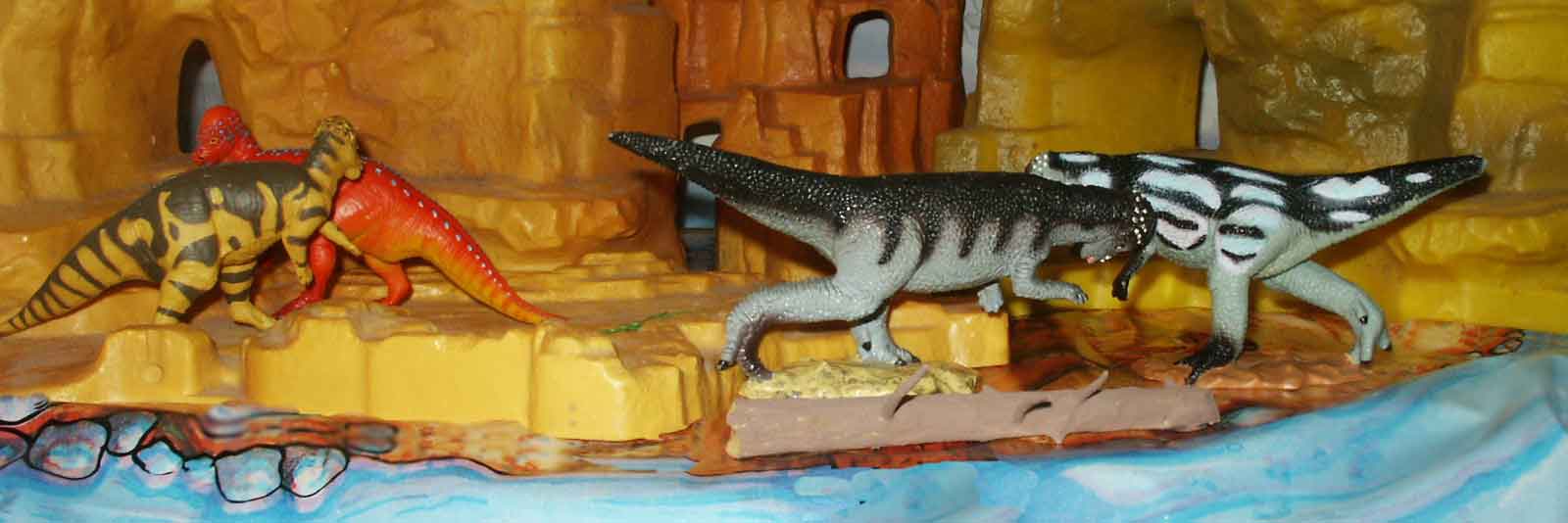
The retired Carnegie Safari Pachycephalosaurus came it two paint variants. above uses the Adventure Dinosaur Dinorama. The Wild Safari Pachycephalosaurus in original orange and current brown. The mountains are from the Marx playset.
Go to the next Hell Creek page with the arrows
| Previous; Page 1 | Next; Page 3 |
To return you can use the back option
Return to Mesozoic Menu for more diorama